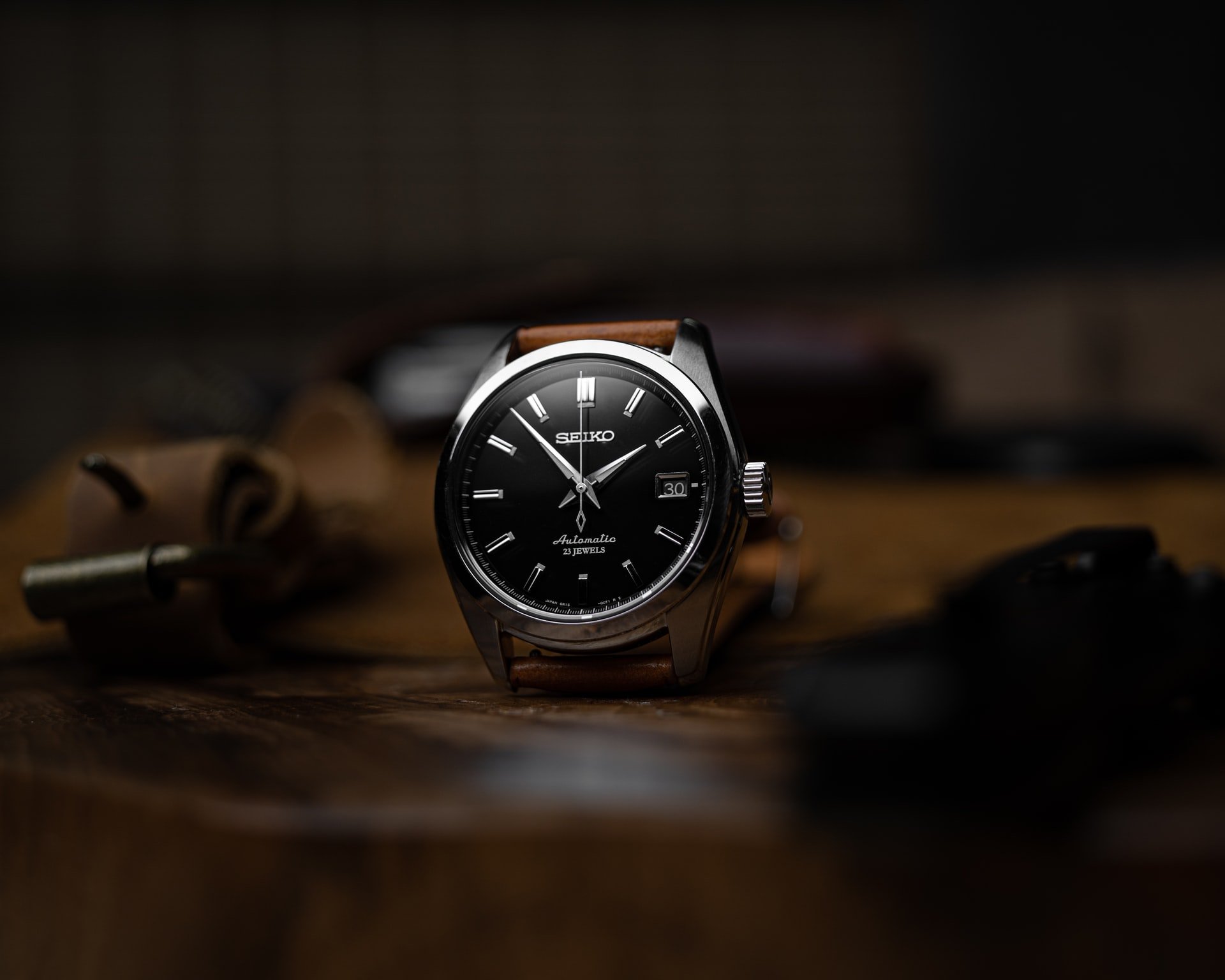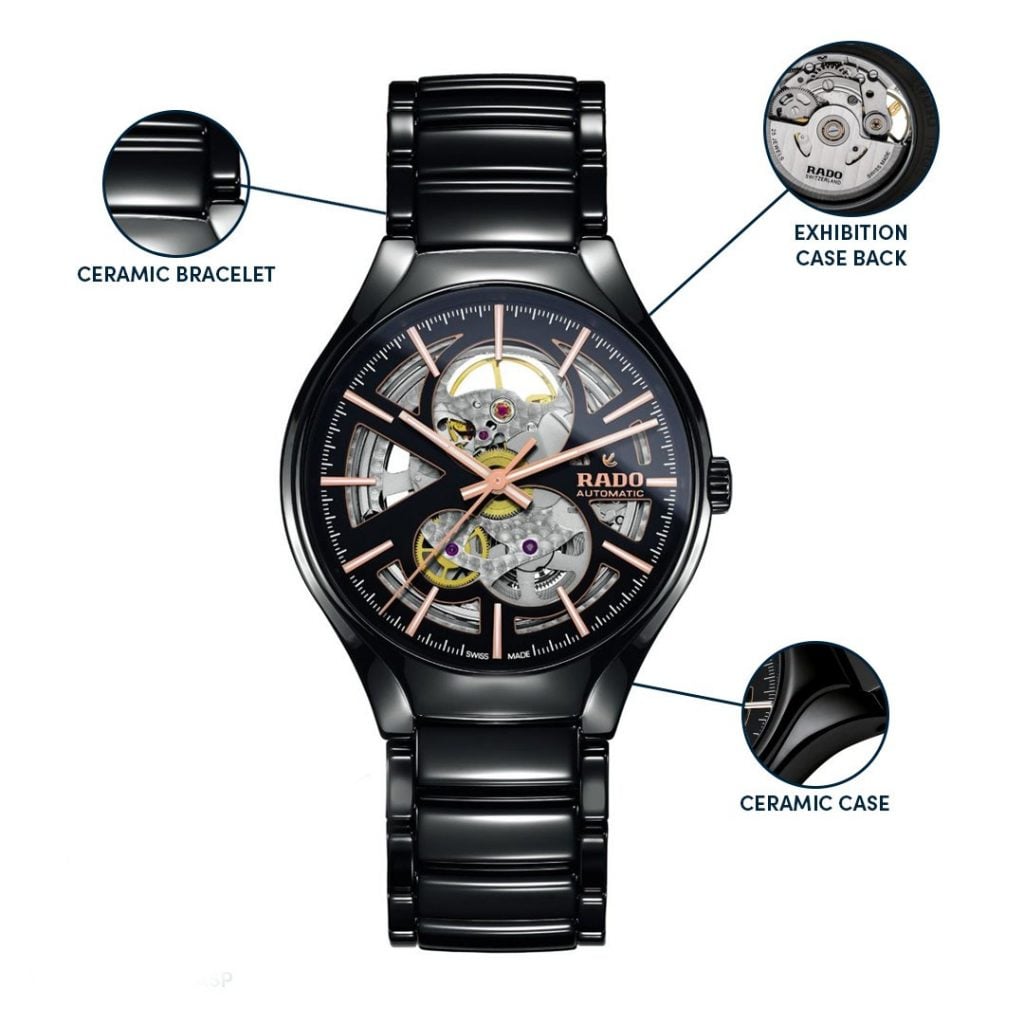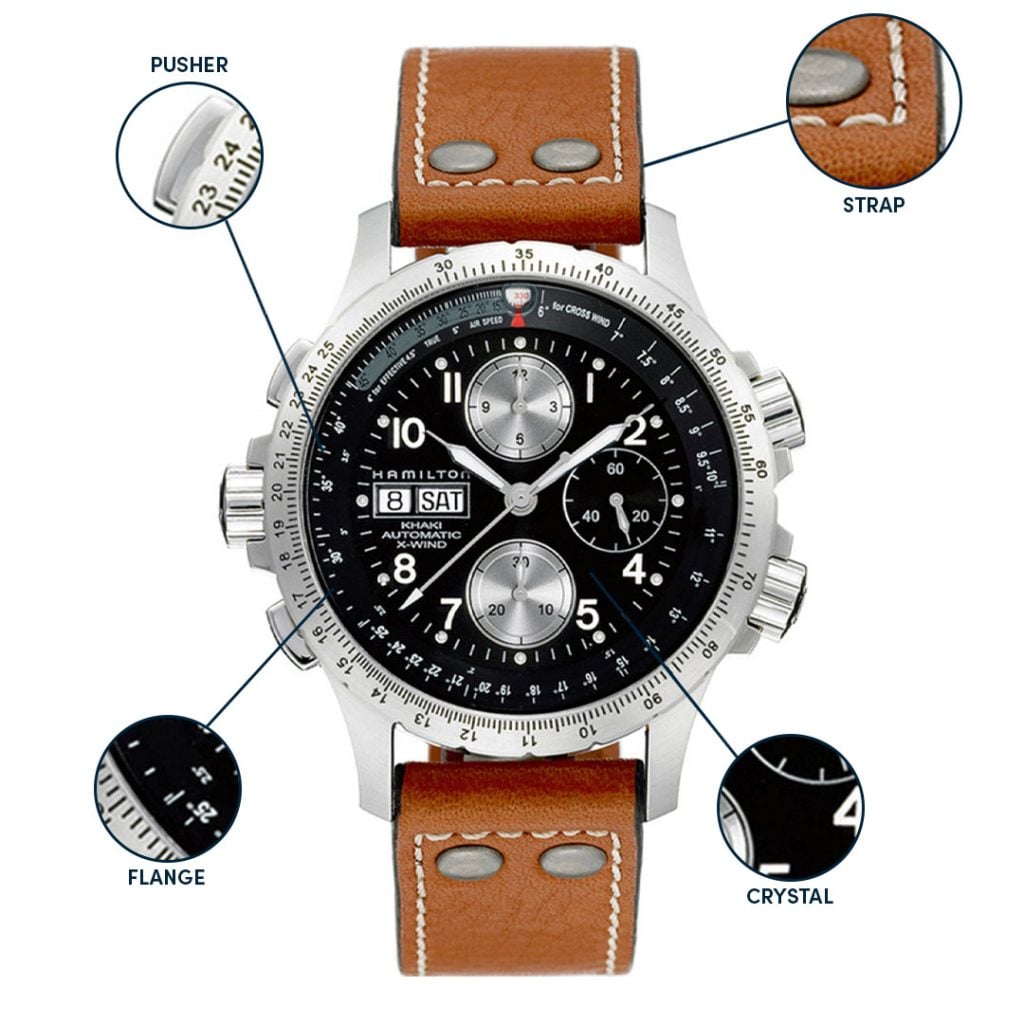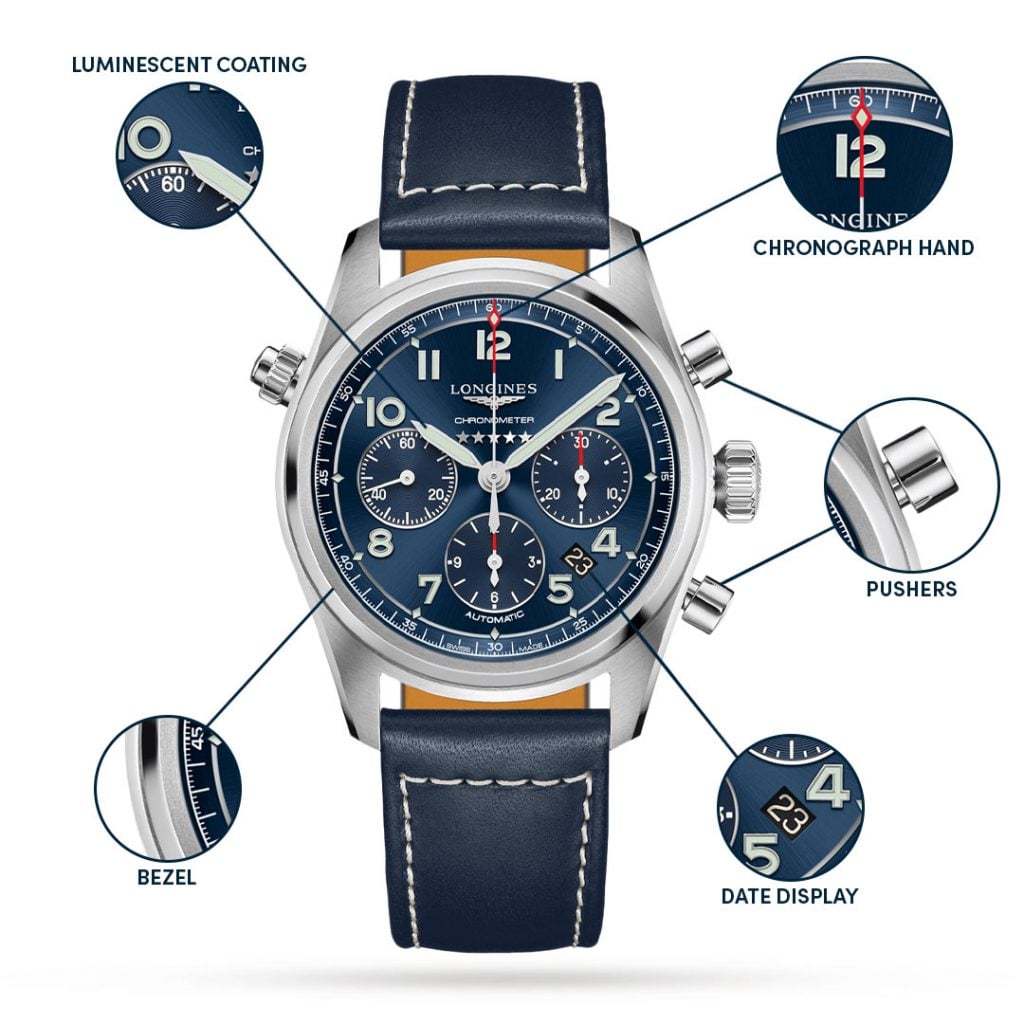Finding somethign you’re passionate about is a beautiful thing. It makes you feel excited like when tou were little all over again. If you’re just discovering your love for watches the terminology can be confusing. It might be tempting to just disregard the terms and go off aesthetics alone. We, however, find that before you delve deeper into horology and start expanding your collection there’s just some essential watch terminology for beginners you should know.
Case
The case is where the movement of the watch is stored. It protects the movement from knocks, shock and ensures its water resistance and durability for the years ahead. The case shape and material also contribute to the design and style of the watch. When talking about what is important in a timepiece, cases are rarely focused on, but considering their importance, it’s vital you make an informed decision. Some of the more popular materials for cases are stainless steel, titanium or ceramic.
Case Back
The case back is exactly what it sounds: the back of the case. The case back often holds information about the timepiece. It would have the name of the brand, information about the watch’s water resistance, its serial number and materials. On some special or limited edition watches brands sometimes brands include a special engraving. The case back is usually made of stainless steel.
Exhibition case back
An exhibition case back is a case back which is transperant and showcases the movement of the watch. This adds interest to the design and it’s found either in manual or automatic watches. In most cases the crystal covering the movement is the same which covers the dial, there are some exceptions however.
Strap and Bracelet
Securing the case to the wrist of the wearer and guaranteeing ultimate comfort is the strap or bracelet. When talking about “watch straps” we usually refer to any strap made of fabric, silicone, rubber, leather etc. The term “bracelet” is usually only used when referring to a metal strap. This can be a traditional metal strap, a mesh one or a bangle. Bangles are also used sometimes, mostly on women’s watches. Bracelet is also used for ceramic, as the end result resembles a metal bracelet.
Bezel
A bezel is a top ring surrounding the dial and encasing the crystal. The bezel can be decorative or functional. A functional bezel can be uni-directional, which is most common in diving watches, or bi-directional. Uni-directional bezels are useful to measure the elapsed minutes during diving and ensure the bezel doesn’t move, ensuring the safety of the wearer.
Crystal
The crystal, also known as the glass, of the watch, protects the dial.b The crystal can be made of acrylic, mineral glass or sapphire. As with watch cases, the different materials give crystals different properties. An acrylic crystal is much more flexible and would not shatter easily, however, acrylic is softer and is easily scratched. Sapphire is the most scratch-resistant but it is also the most brittle of the three. The mineral glass is in between both, not as brittle as sapphire yet more scratch-resistant than acrylic.
Crown
The crown is a mechanism usually placed at the side of the timepiece. It is used to set the time as well as wind the movement in mechanical watches. In most watches, crowns are fairly delicate. When winding a watch or setting the time it’s important to do so properly. The watch should be taken off the wrist and wound that way in order to avoid bending the crown.
Pushers
The pushers are buttons with which you can control the chronograph. They work to start, stop and reset the chronograph mechanism. The pushers are usually placed on either side of the crown and which button is used to perform an action is specific to the model itself so it’s important to read the manual of the watch you have.
Flange
The flange is similar to a bezel. It’s featured on the inside of the dial. It fills the edges of the inside of the case between the crystal, or the top of the case, and the dial. Often the flange is left the same colour as the dial, however, it is sometimes used as a decorative element or to add more functionality to the timepiece.
Luminescence
When we talk about luminescence we talk about the glow in the dark elements of a watch. Luminescence is a feature that’s highly sought after especially in diver’s watches. There are several types of luminescence. The most common method is to coat the hands and/or the indices in a photoluminous substance such as Super-LumiNova. Another popular method is the use of micro gas tubes. The brands Luminox and Ball are most famous for their exceptional luminescence.
Complication
A complication is a feature on a timepiece which is not the basic time. Hours, minutes and seconds are the base time-telling functions of a watch and why most people buy one. Complications on the other hand is anything additional to the dial which offers other information, such as the date, the moon phase, how much power is left in the watch before it needs to be re-wound and so on.
Day and Date Aperture
The day and date apertures is an opening into the dial which reveals rotating discs underneat with the date and/or day. These complications can also be in the form subdials. Some watch models also offer a month aperture and a perpetual calander to a certain year. This means the date is programmed to set itself correctly on leap years and will not need to be manually set until the year the perpetual calander runs out.
Chronograph
A chronograph is a complication most often found on racing, diving or pilot watches. Chronographs are used as stopwatches and sought after for their accuracy. Most chronographs have an independant second’s hand, a minutes subdial and sometimes a secondary longer 60-minute subdial.
Moonphase
In simplest terms a moonphase display shows the current phase of the moon. In the past the moon phases were incredibly important to humanity. People planed harvests and travel around them and used them to tell the passing of the months. We still to this day follow a similar moon cycle calendar from millenia ago. These days the moonphase complication is more used as a decoration than anything else. The complicated nature of the feature makes it a rarity in most timepieces and is usually only added to luxury watches as a mark of taste and refinement.
Power Reserve
A power-reserve refers to the power which is stored in the watch between winding. When wound, the mainspring stores energy when the watch is wound and slowly releases it over time. Once that stored energy runs out, the watch needs to be wound again. That’s why its advised you wear an automatic timepiece daily. Most watches have a power-reserve between 40 and 50 hours, however, some go up to 120 hours.
Water Resistance
Water resistance is amongst the most essential elements on a timepiece. The term refers to how well the watch will last if submurged into water and if it would be detrimental if it got wet by accident. If water gets into the mechanism of the timepiece especially if the watch is quartz, it can severly damage it and stop it working.
If you’ve discussed water resistance with someone you might have heard them talk about bars. The water resistance of a watch is measured either in meters, bars or atmospheres, where often bars and atmosphere are used interchangably. In terms of resistance 1 bar is equall to 10 meters. If you’d like to learn more about how to maintain the water-resistance of your watch and what the different depths mean for you when using your watch in the water, we have delved deeper into the topic in our blog “A Guide to Watch Water Resistance”.
Calibre and Movement
The calibre and movement of the watch refer to the internal mechanism. Althought sometimes used interchanagably the terms mean different things. The movement is most often used to describe to the type of movement. Some of the most popular are manual wound, automatic, solar-powered or quartz. Each movement type refers to where the watch gets its power from. Quartz watches use battery power, solar-powered use light, automatic watches use the moevemt of the wrist to activate a rotor which automatically winds the watch, and manual watches need the wearer to manually wind it.
A calibre on the other hand refers to the specific mechanism used. Some brands produce their own movements, while others use movements from other companies. The calibre and its number will often denote what features the watch has and where the mechanism came from. As most calibres are unique to their manufacturers, different calibres have different features and power reserves. We can look at this Seiko Prospex as an example. It’s calibre is V175, which refers to the functions of the watch, while its movement is solar-powered.
Do you think there’s any essential watch terminology for beginners we’ve missed? Let us know what you’d include in the comments below.








